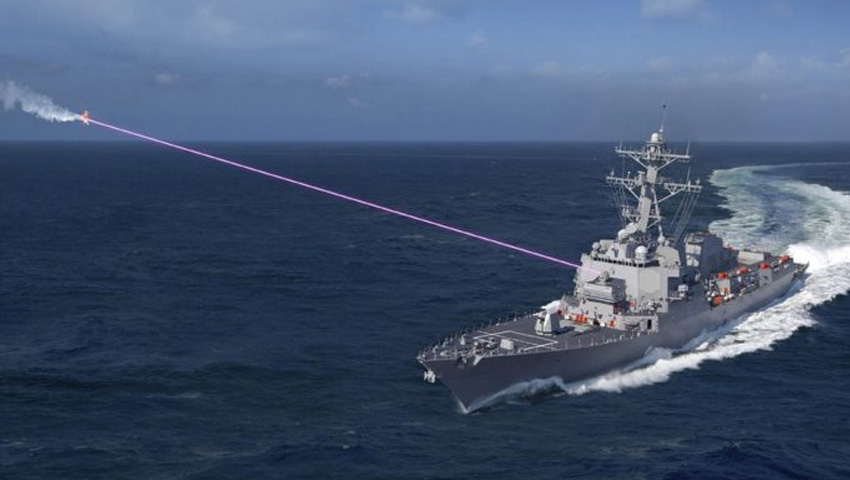In a world first, the US Navy has deployed anti-drone laser ‘dazzler’ weaponry aboard one of the fleet's guided missile destroyers to counter the increasing proliferation of advanced unmanned aerial systems.
To continue reading the rest of this article, please log in.
Create free account to get unlimited news articles and more!
In a recent press release, Naval Sea Systems Command (NAVSEA) Public Affairs explained that the technology – termed the Optical Dazzling Interdictor, Navy (ODIN) – has been assigned to the USS Dewey (DDG 105).
An Arleigh Burke Class guided missile destroyer, the ship has seen service in high-tech flashpoints such as the Persian Gulf and the South China Sea. Given concerns cited last year by the US Pacific Fleet Commander over increased production and employment of UAS (unmanned aerial systems) in those areas, the installation of ODIN is seen by many as a necessary response to the changing face of naval operations.
Though the technology is not the first vessel-mounted laser geared towards drone defence, previous iterations – such as the LaWS system deployed on the USS Ponce – were limited to target destruction, rather than offering up the additional capability to 'dazzle'.
NAVSEA was tight-lipped about specific benefits conferred by concentrating on interfering with UAS navigation and communication, but did signal that they were likely to dovetail with recent advances in drone technology.
The team responsible for this previous system's development was the Naval Surface Warfare Center (NSWC) Dahlgren Division, acting in support of Program Executive Office Integrated Warfare Systems.
Owing to their experience with the LaWS design and installation, NSWC Dahlgren was also instrumental in bringing the ODIN project to fruition.
This, in part, could be responsible for the fact that the team was able to take ODIN from the drawing board to a fully installed and mobilised weapons system over the course of 2.5 years.
Comments from senior officials and analysts in the US suggest that the administration intends to further capitalise on the advantage offered by shipboard laser systems.
Rear Admiral Ron Boxall, for example, revealed last May that the US plans to install Lockheed Martin's HELIOS laser (which is capable of both drone and missile defence) aboard the Hawaii-based USS Preble.
In a similar vein, NAVSEA's comments seem to indicate that the deployment of the ODIN system is intended as part of a wide-ranging overhaul of shipboard defence systems across the fleet.
Although the agency stopped short of specifically declaring how many ODIN units are intended for production, it was revealed that "the ODIN program aims to have all units operational within the time frame of several years".

 Login
Login







